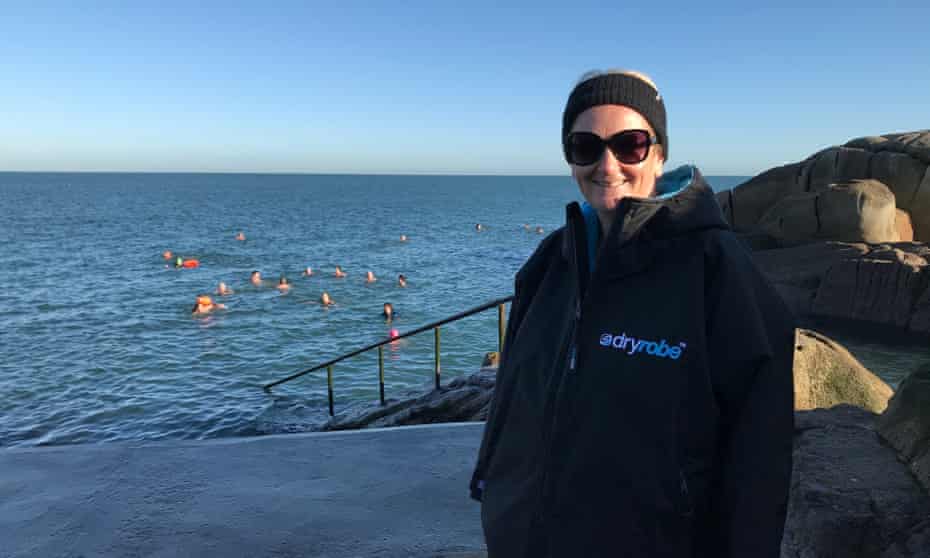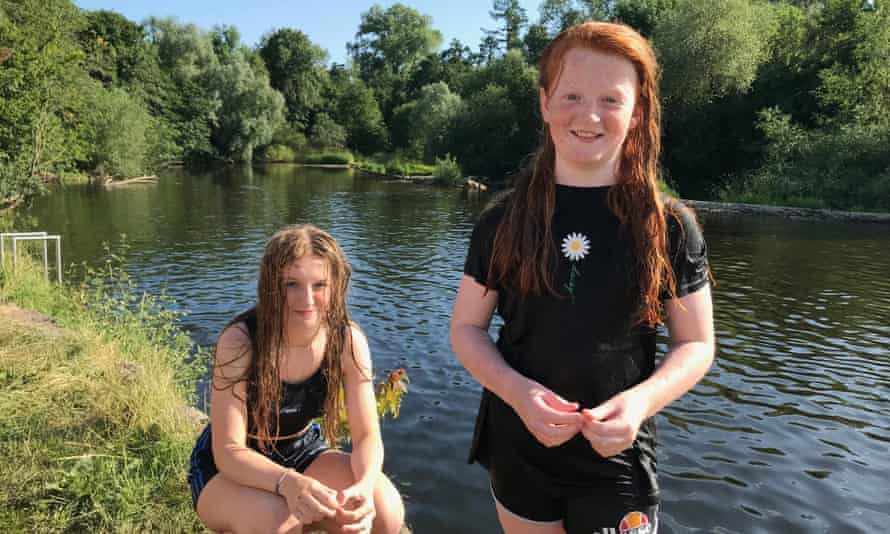The wind sharpens, the rain hardens and a spiteful mist blows in from the Celtic Sea, coating Kilfarrasy strand in a cold, grey miasma.
“And this red one is pepper dillisk,” Marie Power shouts, her voice battling the elements, as she crouches over a rockpool and uses scissors to snip seaweed. “Some people compare the taste to truffles.” She hands out little pieces.
I and the other members of the tour party obediently chew a stringy, salty substance that indeed tastes like truffles, or at least sodden, barnacle-y truffles. I rather like it. We troop to the next rockpool on this patch of County Waterford.
From a distance this may resemble madness. Why forage for seaweed during a downpour? Well, we had a tour booked with Power, AKA the Sea Gardener, an authority on the subject who exudes infectious enthusiasm, it’s summer, so the rain is merely cold as opposed to freezing, and like many others in Ireland we seek a new appreciation of the sea.

It is one of the few things Covid-19 did not shut on the island. For so long we could not fly, dine out, go for a pint, go to the gym, watch a match or attend a concert, but by Neptune we could head to the coast to paddle, swim, surf, kayak, and, it turns out, munch seaweed.
Overlooking the Vikings and other eras, this could be Ireland’s third sea age. In the first, emigrants traversed the Irish Sea or Atlantic to seek opportunities abroad. In the second, Ryanair passengers just glanced down at the waves as they zipped to warmer climes. In the third, a pandemic-marooned population, bereft of alternatives, started to view the sea as something to be enjoyed.
The growing popularity of year-round sea swimming predates Covid-19 but Ireland’s lockdowns – some of the longest and strictest in Europe – made it a boom.
“There’s been a huge explosion in open-water swimming,” says Elaine Mullan, of Waterford Sports Partnership, part of a state-sponsored network that promotes sport and physical activity. “It became contagious – everyone knew someone that was swimming. It became a way for social groups to form, get fresh air and exercise and to socialise in a safe way.”
With swimming beyond summer no longer deemed the preserve of cranks or Spartans, supermarkets now peddle wetsuits, neoprene caps and other gear. Swim Ireland, a governing body for watersports, bolsters confidence and skills with open-water programmes, such as beach to buoy. The tourism agency Failte Ireland is to install all-weather changing facilities at 22 locations around Ireland. Bathing spots once populated by a few solitary “hardies” teem with newbies, many sporting, oh the horror, fleece-lined hooded robes that polarise aesthetic opinion.

The term wild swimming is also divisive. I side with the eye-rollers who consider it pretentious. But recent forays to various spots around Ireland reminded me that open water can bring surprises.
A seal followed me around the Forty Foot, a famous swimming spot in Sandycove, Dublin, one sunlit morning. Bliss. Then as I headed for shore a nearby swimmer began to flail and thrash. A seal bite? Jellyfish? “A shit,” he wailed, pointing at something murky. “Christ. It’s a shit.”
Irish coastal waters are in fact pretty clean. A record number of Blue Flags, 93, were awarded this year to beaches and marinas. Rivers, alas, have become more polluted. But a dip in a clean one can transform your day.
During a visit to Kilkenny – which has no coast – the thermometer soared to Sicilian levels. Hotel Kilkenny’s pool and shaded terrace offered respite, as did the stone cellars of Kilkenny Castle, but the best refuge was the Weir, a woodland swimming spot on the River Nore.
A lifeguard kept watch as people waded, splashed and swam in the clear water. Brian Wall, 23, wearing boxers and flip-flops, dried on the bank. “You feel great after it – better than any drug that’s on the market. Today it’s unbelievable, so warm, smashing, so it was.”
Lorraine and John Paul Comerford, watched their daughters Sophie, 14, and Ciara, 11, take turns diving in. “This is their first year swimming in rivers,” said John Paul. “They love it. They feel freer than in a swimming pool.”

The number of swimmers here has multiplied since the pandemic, said Aidan Brennan, 50, a Paralympic swimmer who has used the spot since he was a teenager. Some newbies even lasted through this February’s “freezebury” charity challenge. The influx appears to not have bothered a heron who fishes in the river.
Timing is everything. A week before we arrived in Valentia island in County Kerry jellyfish invaded the beach at Glanleam, a secluded, spectacular cove. When I turned up there was not a stinger in sight, nor another human, just beauty and a tranquil Atlantic.
Even by Irish standards the weather gods turned capricious during our last stop in Waterford. We had rainproofed our stay by basing ourselves at the Tower Hotel, which has a heated pool, great restaurant and is a stone’s throw from shops and attractions.
Weather apps with hourly updates shaped our itinerary yet we ended up visiting the hub of wonderful museums – devoted to Vikings, medieval and Georgian eras, silversmithing and timekeeping – during glorious sunshine and huddling on beaches, wondering why we didn’t bring extra fleeces, amid darkness at noon.
At Rathmoylan Cove that didn’t matter much. Part of a necklace of coves linked by a cliff trail, it is small, sheltered and safe for children. There was just one other family on the beach and one person in the water, a young woman floating on her back, gazing at the clouds, seemingly lost in contemplation.
Our final beach day was 13 miles south, at Kilfarrasy strand on Waterford’s Copper Coast. We came prepared for rain. Wellies, aqua shoes, anoraks, a pencil for taking ink-free notes on seaweed foraging. We didn’t anticipate simultaneous horizontal, vertical and diagonal rain amid a billowing mist that turned the world grey.

Power, aptly named, emboldened us. The seaweed gardener runs workshops and tours, makes seaweed products and has written a book on foraging. Chefs are among the keenest pupils. There are more than 600 types of seaweed in Ireland and none are poisonous.
Ignoring the downpour, we clambered from rockpool to rockpool nibbling whatever Power snipped and handed over – carrageen, sea spaghetti, dillisk. She listed the nutritional benefits, iodine, iron, vitamin B, potassium, and gave tips on seaweed baths.
Power had plenty more to say but the wind carried away the words and the rain destroyed my notes. In any case my fingers were too numb to write. And this, I thought, is feckin’ August. A blasphemous thought wormed into my brain. Maybe the Irish Sea really is best viewed from a flight to somewhere warm.
Then I looked at my wife and five-year-old, relative newcomers to Ireland accustomed to more tropical climes. Rain bounced off their scrunched faces. My wife leaned down to hear something our daughter said. A demand for hot chocolate, perhaps, or an emergency trip to Disneyland. “She’s asking,” my wife told Power, “if she can have some more seaweed.”




